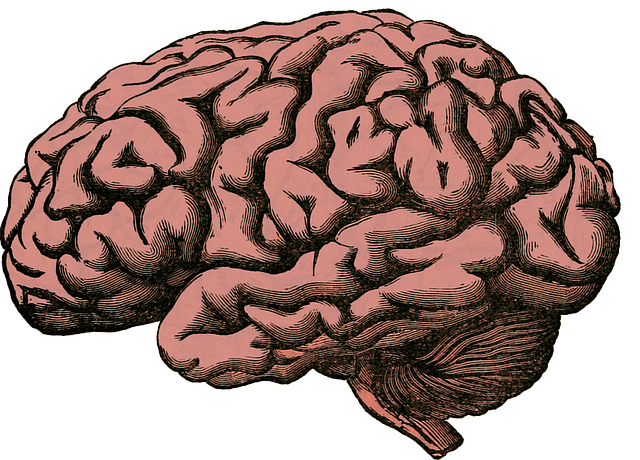Public awareness campaigns, like those spearheaded by Lone Tree Anxiety Therapy, play a vital role in educating communities about mental health issues, dispelling myths, and fostering positive change. By targeting specific audiences with tailored messaging and leveraging both traditional and digital channels, these campaigns empower individuals to take control of their well-being. Measuring success through quantifiable outcomes ensures the impact translates into tangible improvements in public perception and behavior, ultimately contributing to a more supportive society for mental health challenges.
Public awareness campaigns play a pivotal role in educating and influencing communities, with Lone Tree Anxiety Therapy serving as a powerful example. Understanding these campaigns’ potential begins with recognizing their ability to shape public perception and behavior. This article delves into the essential components of successful campaigns, guiding readers through audience identification, message crafting, channel selection, and measurement strategies. By exploring these key areas, we can unlock the full impact of awareness initiatives.
- Understanding Public Awareness Campaigns: Their Role and Impact
- Identifying Target Audiences for Effective Campaigning
- Crafting Compelling Messages: Strategies for Engagement
- Choosing the Right Channels: Digital, Traditional, and Hybrid Approaches
- Measuring Success: Evaluating the Effectiveness of Public Awareness Campaigns
Understanding Public Awareness Campaigns: Their Role and Impact

Public awareness campaigns play a pivotal role in educating communities about various issues, including mental health. These initiatives are designed to shed light on important topics, dispel myths, and encourage positive change. By reaching a wide audience, they can foster understanding, empathy, and support for those facing challenges such as anxiety or burnout. For instance, Lone Tree Anxiety Therapy has successfully utilized awareness campaigns to destigmatize mental health issues, offering valuable resources and support networks to the community.
These campaigns have a profound impact by promoting early intervention and prevention strategies. They can equip individuals with essential tools and knowledge, such as social skills training, risk management planning for mental health professionals, and burnout prevention techniques. Through targeted messaging, they inspire action and create a more supportive environment for vulnerable populations, ultimately contributing to improved public mental well-being.
Identifying Target Audiences for Effective Campaigning

Identifying target audiences is a fundamental step in developing successful public awareness campaigns. Understanding the demographics, psychographics, and behaviors of your intended audience allows for tailored messaging and strategies that resonate deeply with them. For instance, when promoting Lone Tree Anxiety Therapy, it’s crucial to recognize that different age groups, genders, and cultural backgrounds may have distinct needs and concerns regarding mental health. A campaign focused on young adults might emphasize the stress management workshops offered by the organization, while another targeting seniors could highlight emotional well-being promotion techniques tailored to their experiences.
Cultural sensitivity in mental healthcare practice is also essential when crafting these campaigns. Recognizing and addressing the unique challenges faced by diverse communities ensures that messages are inclusive and accessible. By considering factors like cultural norms, values, and beliefs, the Stress Management Workshops Organization can develop initiatives that not only inform but also empower individuals from various backgrounds to prioritize their mental health. Effective campaigning thus involves a nuanced approach that respects and incorporates the diversity of its audience.
Crafting Compelling Messages: Strategies for Engagement

Crafting compelling messages is a critical aspect of successful public awareness campaigns, especially when addressing sensitive topics like mental health. When it comes to Lone Tree Anxiety Therapy and similar initiatives, the goal is not only to inform but also to engage and inspire action. One effective strategy is to tell stories—personal narratives that allow audiences to connect emotionally with the issue at hand. Sharing real-life experiences can humanize complex concepts, making them less intimidating and fostering a sense of understanding and empathy.
Additionally, employing simple and clear language is essential to ensure messages are accessible. Simplifying jargon and technical terms enables a broader audience to grasp the information without feeling intimidated. This approach, coupled with compelling visuals and targeted storytelling, can effectively combat burnout prevention issues prevalent among healthcare providers while also contributing to Mental Illness Stigma Reduction Efforts. By presenting solutions alongside these powerful narratives, campaigns can empower individuals to take control of their well-being.
Choosing the Right Channels: Digital, Traditional, and Hybrid Approaches

In today’s digital era, public awareness campaigns have evolved to encompass diverse channels, each offering unique advantages. When crafting a campaign for Lone Tree Anxiety Therapy or similar services, it’s crucial to understand that different mediums attract and engage specific audiences. Traditional methods like local newspapers, radio, and television remain powerful tools, especially when targeting older demographics or those in rural areas with limited internet access. On the other hand, digital platforms such as social media, websites, and online ads offer precise targeting options, allowing for tailored messaging to reach younger, tech-savvy audiences who are often more open to seeking help for mental health issues like trauma support services.
A hybrid approach combining both traditional and digital strategies can be highly effective. For instance, a social media campaign could raise awareness about the availability of mental wellness journaling exercise guidance, while simultaneously driving users to a dedicated website or mobile app. Additionally, healthcare provider cultural competency training can be promoted through online webinars, reaching a wide professional network. This multi-faceted approach ensures that campaigns resonate with diverse audiences, ultimately amplifying their impact and encouraging more individuals to seek the help they need for managing anxiety and trauma.
Measuring Success: Evaluating the Effectiveness of Public Awareness Campaigns

Measuring success is a critical aspect of public awareness campaigns development, especially when addressing sensitive topics like mental illness and stigma reduction efforts. To truly evaluate the effectiveness of these initiatives, beyond mere exposure to information, quantifiable outcomes should be monitored. This includes tracking changes in public perception, attitudes, and behaviors related to the campaign’s focus. For instance, Lone Tree Anxiety Therapy could measure success by surveying participants before and after their engagement with a campaign, gauging shifts in understanding and sympathy towards individuals dealing with mental illness.
By implementing robust evaluation methods, developers of public awareness campaigns can ensure their efforts translate into tangible improvements. This data-driven approach not only helps refine current strategies but also guides the design of future Mental Illness Stigma Reduction Efforts, fostering a more accepting and supportive society. Moreover, successful campaigns can inspire confidence boosting initiatives that empower communities to take proactive measures in supporting one another’s mental health needs.
Public awareness campaigns play a pivotal role in educating and influencing communities, as evidenced by successful initiatives like Lone Tree Anxiety Therapy. By understanding target audiences, crafting compelling messages, and utilizing the right communication channels, these campaigns can significantly impact behavior change and social progress. Measuring success through evaluation ensures that efforts remain effective and adaptable to evolving needs. This strategic approach, guided by data and community engagement, is key to creating lasting positive change in any field, from mental health awareness to environmental conservation.










